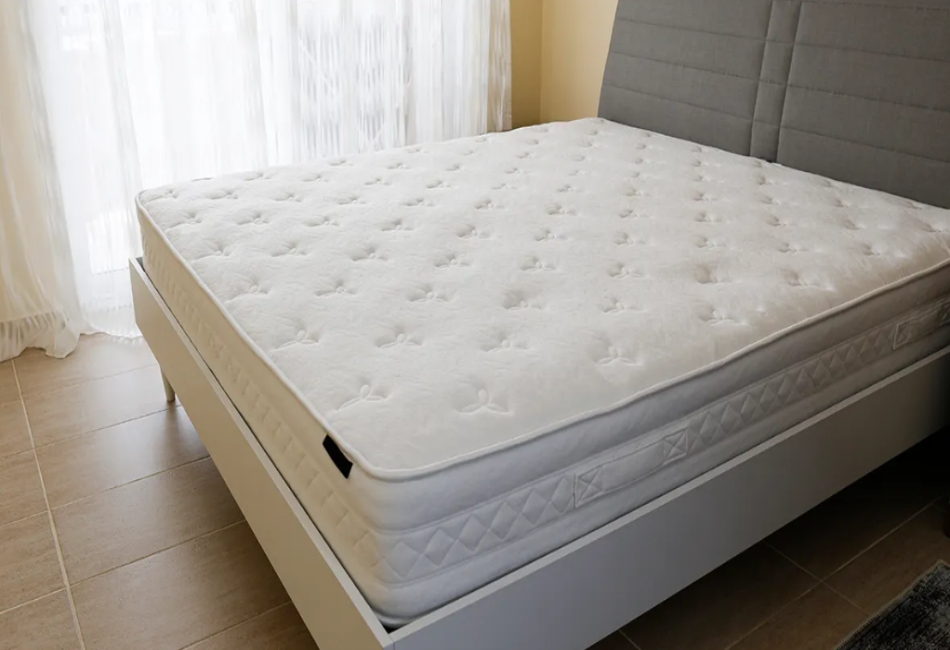When it comes to achieving restful sleep, many people focus on comfort and support, but few realize the critical role mattress materials play in overall health and mental clarity. Choosing fiberglass-free mattresses is one of the safest decisions you can make for both your body and mind. The materials your mattress is made from can affect your indoor air quality, your exposure to toxins, and ultimately your ability to rest peacefully and wake up with a clear, refreshed mind.
In this article, we’ll explore the hidden impacts of common mattress materials, why safe sleep environments matter, and how making informed choices can promote a healthier, more balanced life.
Understanding Mattress Materials: More Than Just Comfort
At first glance, a mattress is simply a place to lie down. But beneath the surface, mattresses are composed of various synthetic and natural materials—foams, adhesives, fabrics, flame retardants, and sometimes fiberglass. These substances can release volatile organic compounds (VOCs) and other chemicals into the air over time, a process known as off-gassing.
While many people are aware of comfort levels and durability, few understand that these chemicals can have subtle yet significant effects on their health. Long-term exposure to toxic materials in your mattress can cause respiratory issues, skin irritation, headaches, and even impact cognitive functions like concentration and memory. Choosing non-toxic, certified products like those from OMF Mattresses can help reduce these risks while ensuring comfort and safety.
The Hidden Danger of Fiberglass in Mattresses
Fiberglass is commonly used in many mattresses as a fire retardant layer, but it poses unique risks. Though it prevents fire hazards, broken or degraded fiberglass fibers can become airborne and irritate the skin, eyes, and lungs. This exposure is particularly dangerous for children, those with asthma, or individuals with sensitive respiratory systems.
Moreover, the irritation caused by fiberglass exposure can lead to disrupted sleep patterns. Tossing and turning because of itching or discomfort reduces the quality of your rest, which directly impacts mental clarity, emotional well-being, and daily performance.
Why Choose Fiberglass-Free Mattresses?
Opting for fiberglass-free mattresses ensures you avoid these risks altogether. These mattresses rely on safer, non-toxic fire retardant materials that do not shed harmful particles. Brands that focus on transparency and sustainability often disclose their material components, allowing consumers to make safer choices.
A fiberglass-free mattress is not only safer but often designed with organic or natural materials like organic cotton, natural latex, or plant-based foams, which contribute to a healthier sleep environment by minimizing chemical exposure and enhancing breathability.
How Mattress Materials Affect Mental Clarity
Sleep and brain health are intricately connected. Quality sleep supports memory consolidation, emotional regulation, and cognitive processing. When your mattress materials expose you to irritants or toxins, your sleep quality suffers, which in turn impacts your brain function.
For example, chemical off-gassing from synthetic foams or adhesives can cause headaches and a “foggy” feeling upon waking. Poor sleep quality due to discomfort or respiratory irritation reduces your brain’s ability to clear metabolic waste, leading to decreased mental clarity and increased stress.
By investing in safer mattress materials, you’re not just protecting your body — you’re nurturing your mind.
Recognizing Safe Mattress Materials
To create a sleep environment that supports health and mental clarity, it’s important to know which materials to seek and which to avoid.
Safer Materials:
- Natural Latex: Durable and naturally resistant to dust mites and mold.
- Organic Cotton and Wool: Breathable and hypoallergenic.
- Plant-Based or Low-VOC Foams: Reduced chemical emissions.
- Non-Toxic Fire Retardants: Materials like wool or barrier fabrics that comply with safety without harmful chemicals.
Materials to Avoid:
- Fiberglass: As mentioned, can cause irritation and health issues.
- Chemical Flame Retardants: Often linked to hormone disruption and toxicity.
- High-VOC Synthetic Foams: Off-gas toxic chemicals during early use and beyond.
The Environmental Impact of Mattress Materials
Safe sleep is not only about personal health but also environmental stewardship. Mattresses containing synthetic chemicals and fiberglass contribute to landfill pollution and take hundreds of years to decompose. Choosing eco-friendly and fiberglass-free options supports sustainable practices and reduces the ecological footprint of your home.
Practical Tips for a Healthier Sleep Environment
Beyond choosing the right mattress, consider these additional tips to enhance your bedroom’s safety and sleep quality:
- Air Out Your Mattress: New mattresses may off-gas initially. Ventilate your bedroom by opening windows when possible.
- Use Organic Bedding: Pillows and sheets made from organic cotton or bamboo reduce allergen exposure.
- Maintain Clean Air: Use air purifiers to reduce dust, allergens, and indoor pollutants.
- Keep Your Bedroom Cool and Dark: Optimal temperature and minimal light help regulate your sleep cycle.
Conclusion: Sleep Safe to Think Clear
Your mattress plays a more important role in your health than just comfort and support. The materials used can significantly influence the air you breathe at night, your skin health, and even your brain’s ability to function clearly during the day. By choosing fiberglass-free mattresses and other safe materials, you can protect your body from harmful irritants and toxins, leading to deeper, more restorative sleep.
A safe sleep environment supports not only your physical well-being but also your mental clarity, emotional balance, and overall quality of life. When you prioritize safe materials, you invest in a foundation for health that goes beyond your mattress — it reaches into every aspect of your day-to-day life.
